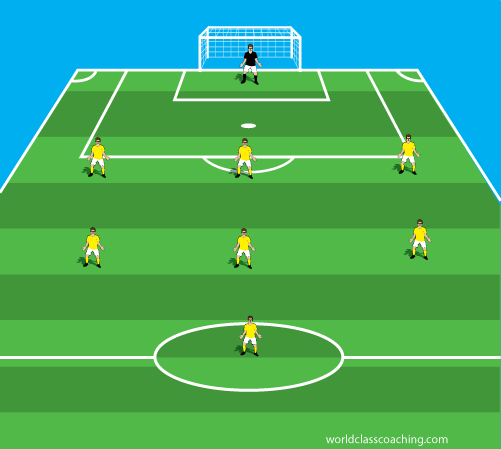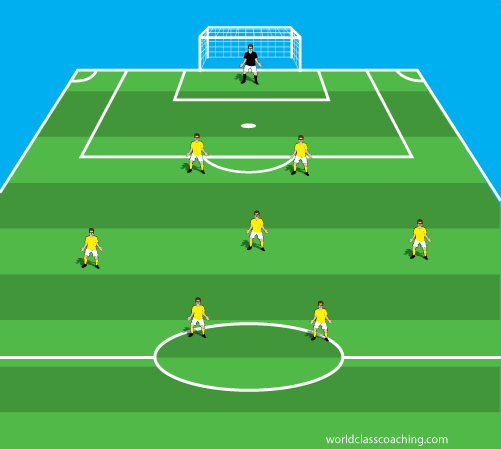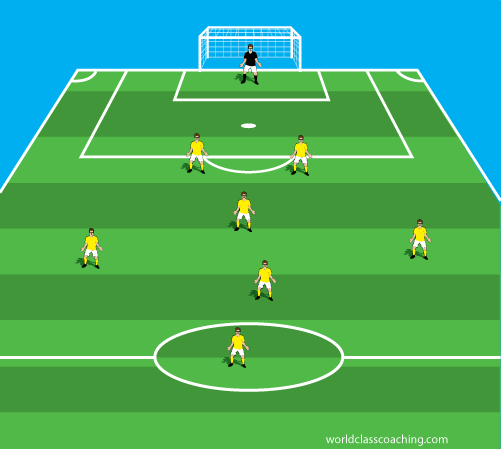Last week I gave examples of formations that you can use in the 6v6 format that is used in many areas of the US for U9 and U10 teams. You don't have too much flexibility when there are only six players on your team.
With the 8v8 format you can do a number of things to play to the strengths of your team or the weaknesses of the opponent.
The most common line-up I've seen is a 3-3-1. This formation gives you a lot of cover in the back allowing the wide midfielders the opportunity to get forward to support the single striker. There is also a natural transition from 3-3-1 to 4-4-2 when the team begins to play full-sided games.
My personal preference is to play 2-3-2 because it provides the opportunity to stress the importance of pressure and cover on defense. It also teaches the wingers to cover the back side when their team is defending. On attack, the two strikers can play off each other without having to wait for support from the midfielders. I also like this formation because I like to play 3-4-3 with some of my teams when we transition to full-sided games.
[wpsharely id="6889"][/wpsharely]I've also used a 2-4-1 formation with one attacking and one defending midfielder. This gives you extra cover in the center and allows the attacking midfielder to join the striker when they can.
As I said in last weeks post, the formation is not the most important issue when coaching young players but it can give you the opportunity to emphasize the area of the game you want to coach.
Are there any other formations that you use with your teams that have worked well?
Have a Great Day!
Tom





